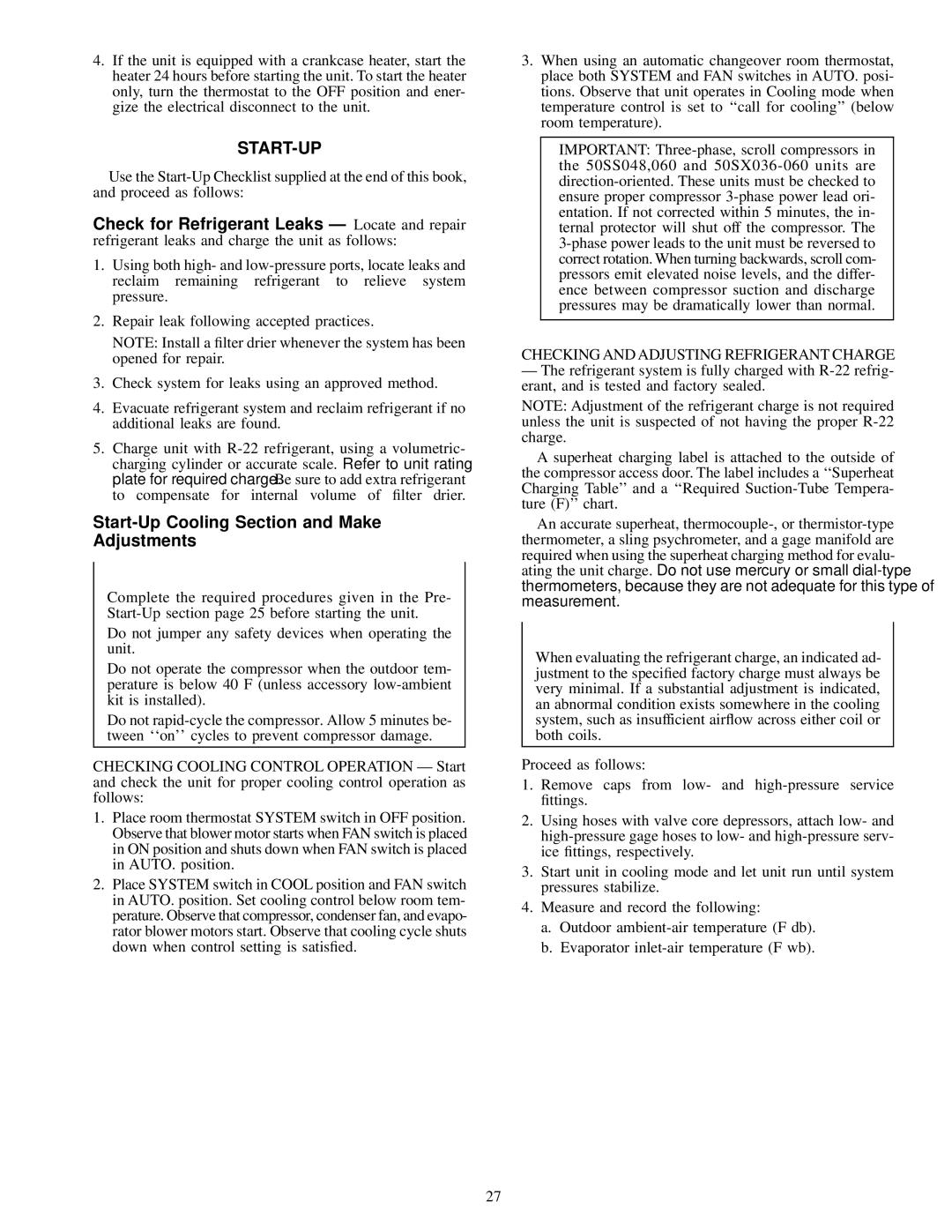
4.If the unit is equipped with a crankcase heater, start the heater 24 hours before starting the unit. To start the heater only, turn the thermostat to the OFF position and ener- gize the electrical disconnect to the unit.
START-UP
Use the
Check for Refrigerant Leaks Ð Locate and repair refrigerant leaks and charge the unit as follows:
1.Using both high- and
2.Repair leak following accepted practices.
NOTE: Install a ®lter drier whenever the system has been opened for repair.
3.Check system for leaks using an approved method.
4.Evacuate refrigerant system and reclaim refrigerant if no additional leaks are found.
5.Charge unit with
Start-Up Cooling Section and Make Adjustments
Complete the required procedures given in the Pre-
Do not jumper any safety devices when operating the unit.
Do not operate the compressor when the outdoor tem- perature is below 40 F (unless accessory
Do not
CHECKING COOLING CONTROL OPERATION Ð Start and check the unit for proper cooling control operation as follows:
1.Place room thermostat SYSTEM switch in OFF position. Observe that blower motor starts when FAN switch is placed in ON position and shuts down when FAN switch is placed in AUTO. position.
2.Place SYSTEM switch in COOL position and FAN switch in AUTO. position. Set cooling control below room tem- perature. Observe that compressor, condenser fan, and evapo- rator blower motors start. Observe that cooling cycle shuts down when control setting is satis®ed.
3.When using an automatic changeover room thermostat, place both SYSTEM and FAN switches in AUTO. posi- tions. Observe that unit operates in Cooling mode when temperature control is set to ``call for cooling'' (below room temperature).
IMPORTANT:
CHECKING AND ADJUSTING REFRIGERANT CHARGE
ÐThe refrigerant system is fully charged with
NOTE: Adjustment of the refrigerant charge is not required unless the unit is suspected of not having the proper
A superheat charging label is attached to the outside of the compressor access door. The label includes a ``Superheat Charging Table'' and a ``Required
An accurate superheat,
When evaluating the refrigerant charge, an indicated ad- justment to the speci®ed factory charge must always be very minimal. If a substantial adjustment is indicated, an abnormal condition exists somewhere in the cooling system, such as insufficient air¯ow across either coil or both coils.
Proceed as follows:
1.Remove caps from low- and
2.Using hoses with valve core depressors, attach low- and
3.Start unit in cooling mode and let unit run until system pressures stabilize.
4.Measure and record the following:
a.Outdoor
b.Evaporator
27
